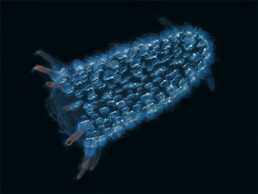Living Light: Is There a Future For Bioluminescence Technology?
From fireflies to deep sea creatures bioluminescence has intrigued, confused and delighted us. Bioluminescence is the natural ability of certain plants and animals to create light via chemical interaction. Many have felt that bioluminescent technology is nothing but fad technology with no real point or purpose, but recent innovations have begun to challenge that idea. New designs and ideas are beginning to surface that may transform how we light our world.
One of the most obvious ideas is to use bioluminescent algae in lamps to create lighting sources that operate without electricity. These new lamps would run on movement instead of electricity. Bioluminescent algae would be stored in a long glass tube in salted water creating a mini ecosystem. Using weights and a gentle push, these lamps have been designed to mimic a perpetual motion machine which keeps them rocking back and forth for an extended period of time. This technology is still relatively new so it’ll be exciting to follow this trend as it continues to develop.
In the same way researchers are also developing methods to create bioluminescent trees to line city and suburban streets. Bioluminescent plants big enough to be able to generate street light would effectively eliminate the need for more expensive electrical lamps as these would tend to be completely self-sufficient and energy free. The biggest challenge for researchers in this field is increasing bioluminescent brightness to provide sufficient light. This makes the final development of “tree-light” streetlights a more long term goal.
Another more immediate application for bioluminescent technology is using it as a tester for water purity. By genetically modifying bioluminescent microorganisms so that their glow brightens under duress researchers have been able to effectively identify certain toxins in polluted water. By introducing that water into small controlled environments where these microorganisms live the resulting glow tells researchers if certain toxins are present. They’ve been particularly effective in determining the presence of arsenic (a common water contaminant) and oil hydrocarbons.
Similarly in medical research, cell tracking using bioluminescent molecules has made identifying the location of cancer cells, infection agents, and immune system response cells easier. Bioluminescent molecules tend to coagulate in those areas, and since bioluminescent technology allows researchers to study live tissue (something that was previously impossible) they have been able to chart the course and spread of many diseases in an actual living environment.
All of this is just the tip of the iceberg when it comes to up and coming bioluminescent innovations. As research continues the applications for this incredible biological phenomenon will undoubtedly continue to grow.










